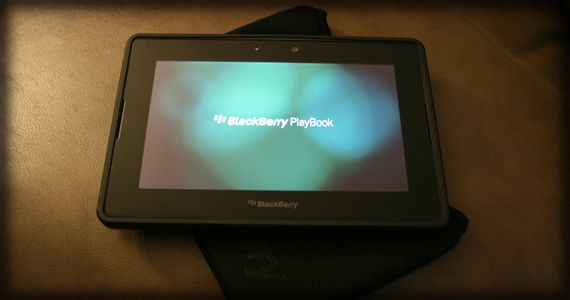This personal device redemption narrative examines BlackBerry's PlayBook 2.0 software update that importantly improved the tablet's features and user experience, demonstrating how major software updates could revitalize struggling mobile platforms during the competitive tablet market period. Eric Wilborn provides an enthusiastic personal account of renewed device usage after the update addressed critical deficiencies including predictive text input, battery life improvement, and Android app sideloading features that made the PlayBook more competitive against iPad and Android tablet alternatives. The coverage captures BlackBerry's attempt to salvage its tablet platform through complete software improvements rather than hardware revision during the company's declining market position.
The hardware appreciation analysis highlights the PlayBook's distinctive 7-inch landscape-oriented design with crisp display quality and minimal physical button layout that provided intuitive navigation through gesture-based controls. Wilborn's comparison with iPad screen quality and emphasis on the device's "portable powerhouse" entertainment features shows BlackBerry's successful hardware design that was undermined by software limitations rather than physical shortcomings. The competitive positioning against the discontinued HP TouchPad illustrates the challenging tablet market dynamics where software support determined device viability.
The software improvement evaluation covers transformative features including SwiftKey-powered predictive text that doubled typing efficiency, importantly improved battery life (reducing movie playback consumption from 40% to 15%), and structured Android app sideloading that expanded the limited native app ecosystem. Wilborn's personal experience shift from occasional usage to daily engagement shows how fundamental software improvements could overcome ecosystem limitations and reignite user engagement with previously abandoned devices.
This BlackBerry PlayBook 2.0 review captures the challenging dynamics of tablet market competition during the period when software ecosystem strength determined platform success more than hardware specs, illustrating how even well-designed devices could fail without adequate app support and user experience refinement. Looking back 13+ years later, the PlayBook represents BlackBerry's missed opportunity in tablet computing, as the hardware foundation was competitive but the company lacked the software development resources and ecosystem partnerships necessary to sustain long-term viability against Apple and Google's integrated platform approaches. The predictive text improvement highlighted here became standard across all mobile platforms, with modern devices featuring sophisticated AI-powered text prediction and correction that far exceeds the SwiftKey connection documented in this review. The Android app sideloading capability anticipated modern tablet strategies where cross-platform app compatibility enables broader software ecosystems, though PlayBook's addation proved too limited and complex for mainstream adoption. The battery life improvement described influenced modern phone development practices where software efficiency improvements often provide more important performance gains than hardware upgrades, establishing patterns for platform maintenance and user retention strategies. The landscape orientation emphasis proved prescient as modern tablets increasingly support dynamic orientation and multitasking workflows that leverage wider screen formats for productivity applications. The personal redemption narrative documented here illustrates how software updates can fundamentally change user relationships with devices, establishing expectations for ongoing platform improvement that now characterize successful mobile ecosystems. This moment represents the period when tablet success required complete ecosystem development rather than single device excellence, establishing lessons that influenced modern platform strategies where software services, app availability, and continuous improvement determine long-term market viability more than hardware specs.
This summary was created by Dave Rogers. The original post was written by Eric Wilborn and published on March 1, 2012.
If you'd like to view the original post, you can find it here.
